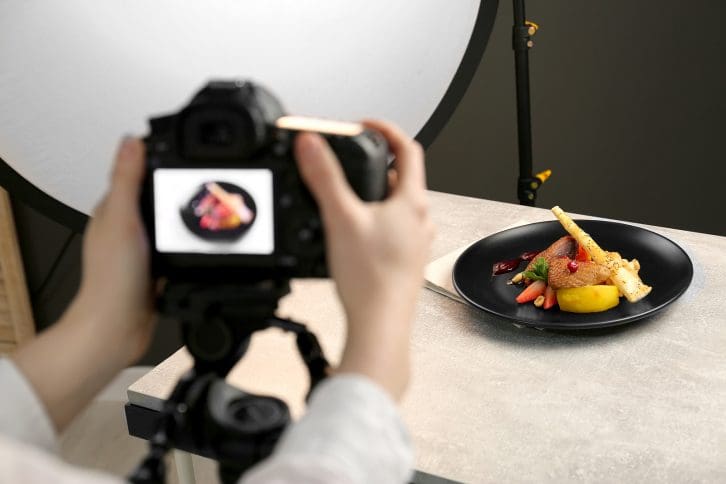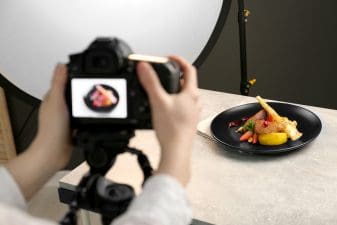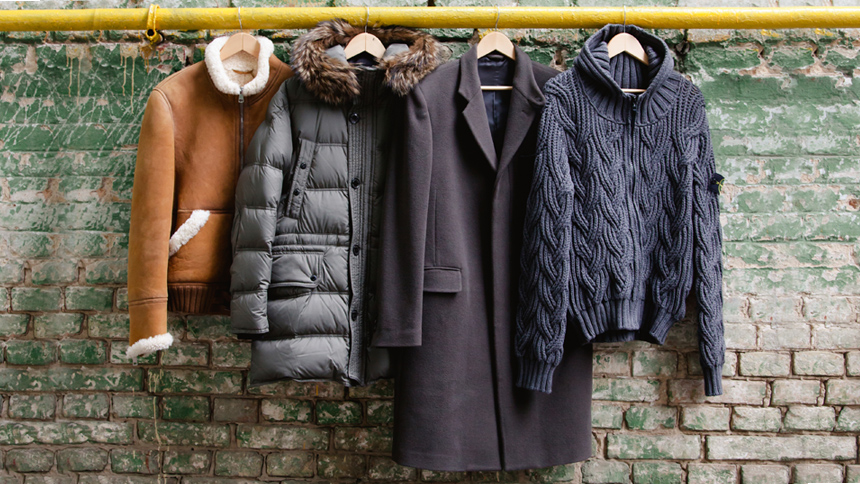
Looking to land a job as a food magazine editor? Thinking your cookbook should be published by Clarkson Potter?
Take a look at the career trajectory of food media industry titans—such as Sam Sifton, Clotilde Dusoulier, Sara Foster and Tom Colicchio—to get a hint of the diverse paths that could lead to a juicy food industry media career.
Also on Mediabistro


From food copywriters and stylists to food bloggers and photographers, consider these behind-the-scenes gigs as the starting point to what could be a burgeoning food media career.
The Stylist: Making Food Look Irresistible
Atlanta-based Tami Hardeman got her start as a food stylist by way of fashion. Working as a writer for Woman’s Wear Daily, styling photo shoots was a big part of the gig.
When Hardeman got offered the opportunity to style food for a shoot, she took it. Since then, she’s been working as a commercial-level food stylist for top brands, including McDonalds, Arby’s and Olive Garden.
Her work can be seen on menus, billboards, television commercials and other channels.
“I assisted for a long time,” Hardeman says.
“I had the benefit of being able to support myself as a fashion stylist while I learned how to style food. Styling food is not easy. I know there are programs through culinary schools that are teaching people how to style food, but I think the best way to learn how to become a stylist is to practice. Take time with your camera—it doesn’t have to be a fancy camera—and take photographs of your food or have someone take photographs of your food,” she says.
While food styling can have its challenges, the overall goal is simple: “Food stylists are hired to make food look good enough to eat,” Hardeman says.
“These days, stylists don’t use a lot of fake food or tricks—too many truth in advertising laws, etc. that would hold companies liable. I have a huge storage bin-sized kit of tools and items I take on shoots—too many to name: spritzers, tweezers of every sort, hundreds of brushes.”
Food stylists follow basic principles of styling, Hardeman says, a strategic “spritz” here or a well-placed “brush of oil” there to moisten foods up, “but every shoot is different and troubleshooting what you’re doing as it unfolds is part of the fun,” she says.
The takeaway: Take advantage of the opportunities that come your way, or create your own: Cook dinner, style it up and take a picture.
Then post it on your blog or website with the intention of developing a virtual food stylist portfolio.
Because with a portfolio, you can present to magazines and advertising agencies and possibly even film and television shows.
For those aspiring food stylists looking to develop their own signature style, Hardeman suggests reading food blogs, cookbooks and magazines in order to stay current with styling and photography trends.
The Blogger: Carving out a Niche
In the food industry, blogging is an ideal launch pad for a career as a cookbook author, a food writer at a magazine or a well-trafficked food site like Epicurious.
In fact, Clotilde Dusoulier’s career as a popular cookbook author started out as the blogger behind Chocolate & Zucchini.
For Midtown Lunch blogger Zach Brooks of New York City, the idea for his blog developed organically—as did his audience.
Midtown Lunch, probably the least stuffy foodie blog around, delivers unique, much-needed information that no one else had been providing. “[Midtown Lunch] is helping people find good lunch in a place that doesn’t seem to have good lunch.”
Launched in June 2006, it didn’t take long for the media to pick up on Brook’s blog, and once Gawker discovered Brooks’ site and linked to it, Midtown Lunch took off.
Since then, Brooks has received some not-too-shabby press from The New York Times, USA Today, Rolling Stone and The Guardian.
His blog’s audience grew among the Big Apple food community in part through networking.
“It was only natural that after working so hard and getting linked to by other sites in New York City that it eventually came on the radar,” he says.
Brooks has been so successful with Midtown Lunch that he quit his job as a music programmer at Sirius Satellite Radio and now blogs full-time. He’s also contributed to “Serious Eats” and The New York Times’ “Diner’s Journal,” among other places.
The takeaway: If you want to parlay your blog into a writing gig at a larger foodie magazine or site, then “write the kind of pieces that you think would interest a ‘Serious Eats’ or a ‘Food & Wine’ magazine,” on your blog, Brooks says.
“Once you have that going and you have a nice body of work, then start joining their community” by linking to other’s sites from your blog and leaving comments. By contributing to the online food community through your unique perspective and quality content, you’ll get noticed.
The Copywriter: Crafting the Right Words
Do you have a flair for writing persuasive copy and a love for food? Then food copywriting may be for you. Andy Boynton of Seattle, Wash., left a job as a managing editor at Amazon to work as a freelance copywriter.
Cooking was always a passion, so post-Amazon Boynton decided to take some culinary classes at the Art Institute of Seattle, “but it became quite clear early on that I was a better writer than I was a chef,” he joked.
So Boynton combined his love of food with his writing and editing background. “From there, I reached out to companies like Allrecipes.com and the Le Cordon Bleu cooking schools and freelanced for them.
I wrote book reviews at Amazon.com, and so I was able to parlay that into reviewing food-lit books for Publishers Weekly, Kirkus Reviews and Gastronomica, which is a quarterly food journal.
Also, through my contacts at Amazon.com, I got to help manage Amazon’s Gourmet Food and Grocery stores and write product descriptions for its Kitchen & Housewares store.”
Boynton says there are a lot of opportunities available for food copywriters, but also a lot of competition. “Everyone from food manufacturers to supermarket chains to gourmet retailers needs writers. That’s not to mention all the opportunities that are online, blogs and such,” he says.
“I’m a big believer in the idea that you should use what you have—namely, your connections and your experience—and that you have more than you think,” Boynton adds.
The takeaway: If you want to be a food copywriter, it helps to demonstrate genuine food knowledge or experience, but it’s not absolutely necessary. Boynton suggests reading food blogs, magazines and other foodie media. Also, consciously experience food with all your senses.
“Going to great restaurants and paying close attention to how the food is prepared and presented and how it tastes can get you more familiar with the nuances of food and better able to write about it,” he says.
The Photographer: Building A Mouthwatering Portfolio
New York-based food and beverage photographer Bill Brady has shot professionally for 17 years; 10 of it shooting food. Brady counts Boars Head, Godiva Liquor, Moet Hennessy and Krispy Kreme as clients, just to name a few.
“After leaving corporate America in 1992, I worked in the film industry and as a photo assistant. I began photo retouching and established relationships with several advertising agencies. I eventually began earning a living full time as a photographer,” he says.
Brady believes that food photography can be a tough business to break into. “The best advice I can give aspiring photographers is to shoot and create a strong portfolio,” he says.
If you have zero experience in food photography, one way to gain some is by approaching a local restaurant and offering to shoot their food for free, Brady suggests.
And if you are ready to pitch yourself to a food magazine? “Most people hire you if you have a photograph in your portfolio that matches what they want. If you want to shoot for a particular magazine, study the style and create a unique spin on that style,” he says.
Advertising is even tougher to break into, Brady says. “You really have to put yourself out there, show a strong book. Be prepared for rejection and keep shooting.
Also, networking is the key to any successful business. I get more work through referrals than any other source,” he adds.
“These days one must be able to work in everything,” says award-winning photographer Lou Manna—and he should know.
His work can be seen in more than 40 cookbooks, in marketing campaigns for the likes of Kraft Foods, Dannon and the Culinary Institute of America and for such magazines as Wine Enthusiast and Food Arts.
Plus, Manna works as a public speaker, educator and author of books such as Digital Food Photography. And, taking full advantage of social networking, Manna has created his own photography network: DigitalFoodPhotography.com.
Having a comprehensive outlook on your career in food is essential. “I feel strongly these days that one cannot just be a food photographer, neither am I. It’s only 40 percent of what I do,” Manna says.
The takeaway: Just shoot; shoot as much food as possible, develop your portfolio and then create a site that shows off your work.
The foodie phenomenon is part of the fabric of the media industry. Flip through the channels any day and you’ll see tons of shows dedicated to food: Cake Boss, Top Chef or the entire Food Network channel—all of which likely need food stylists.
On top of that, there are a slew of other foodie magazines to pitch yourself to: Bon Appétit, Cooking Light, Saveur, even food departments at Real Simple, Martha Stewart Living, Fitness and others.
So whether you are interested in starting out at one of these jobs or in the hopes of transitioning to other areas of the food media industry, take comfort in knowing there are almost endless possibilities. Just be prepared for the competition.


.png)







